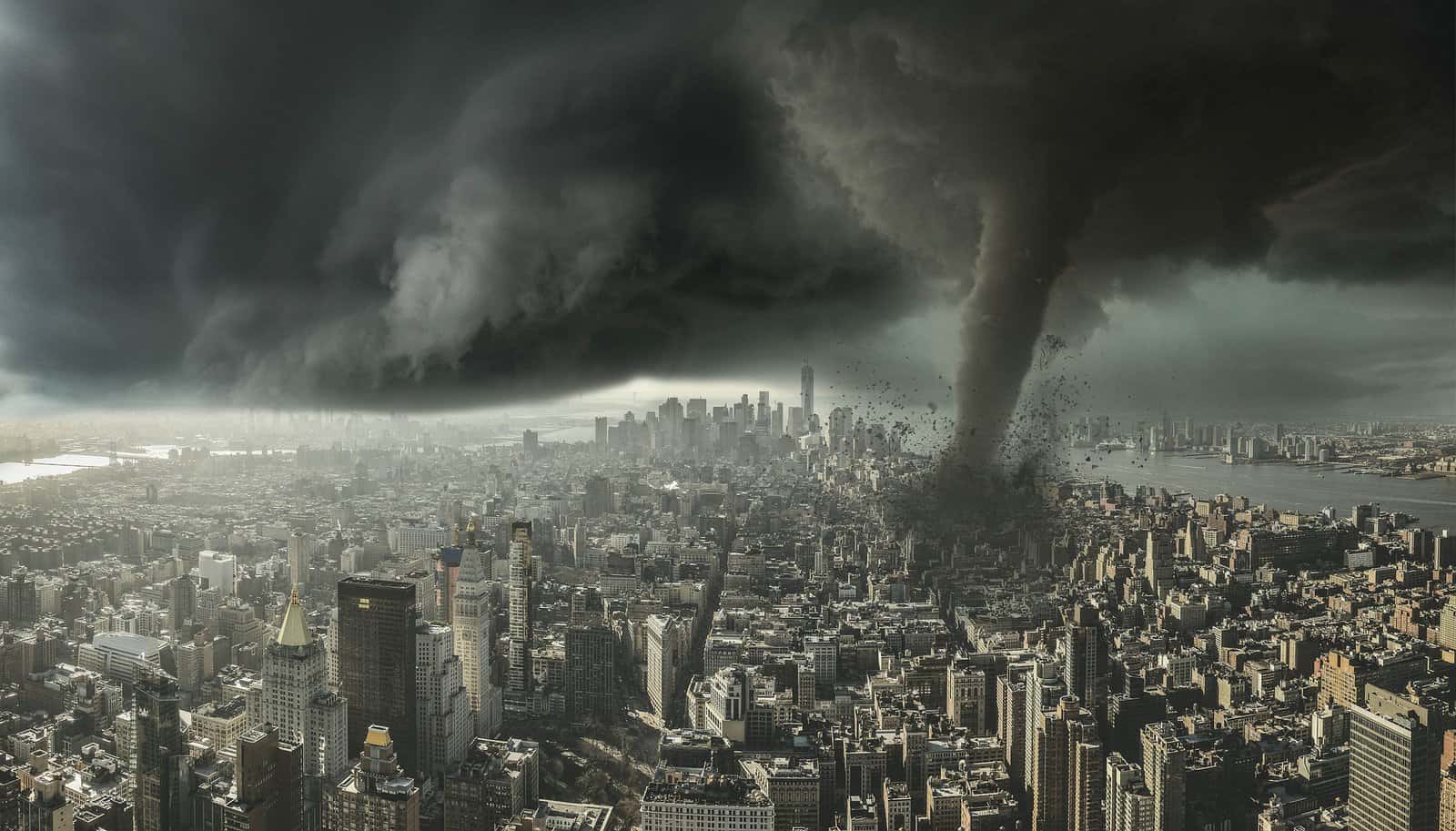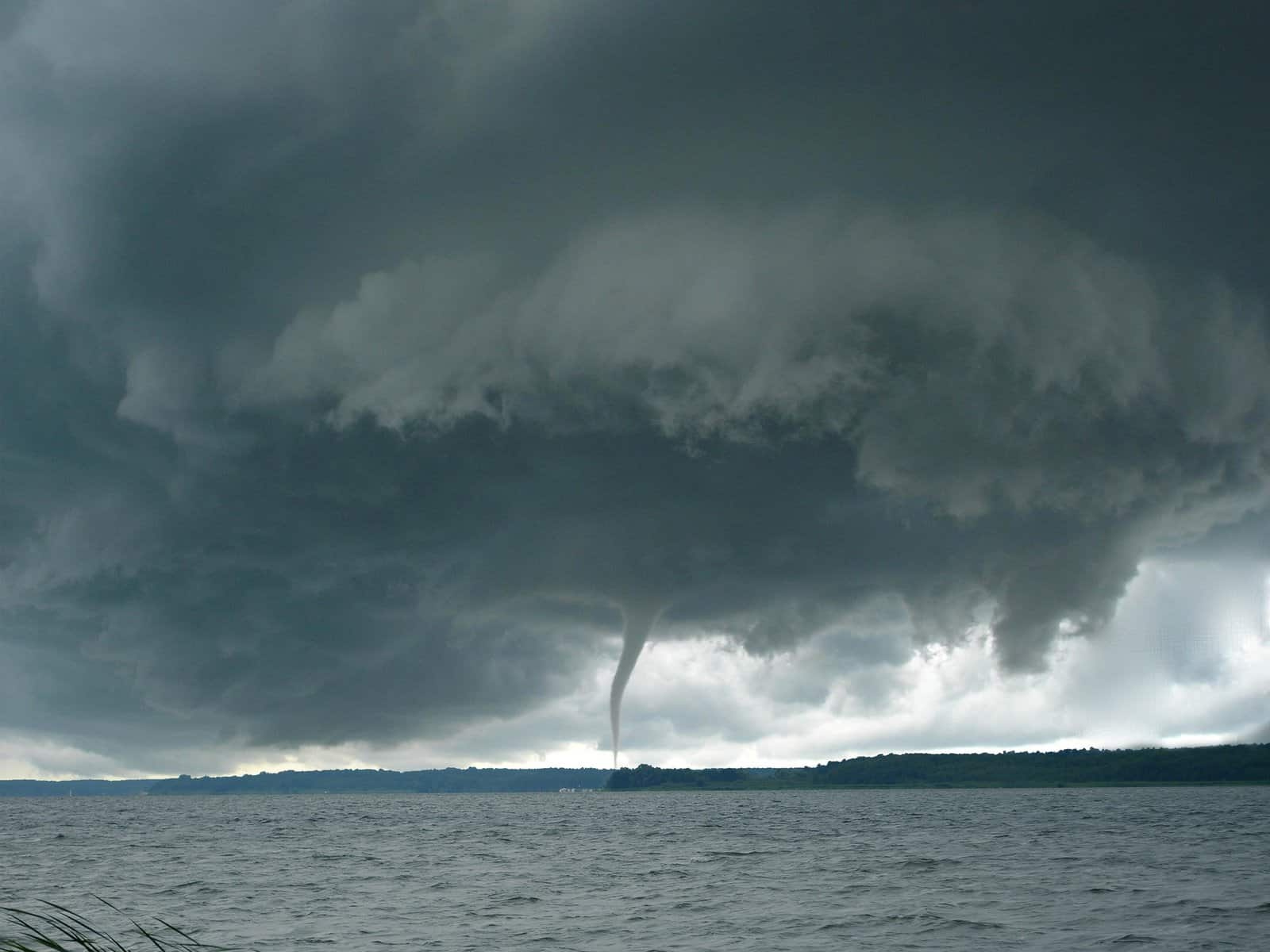
How Do Tornadoes Form? 10 Interesting Facts about Tornadoes
Have you ever thought about the reason why some spinning games at the amusement parks are referred to as tornadoes? This goes back to the real tornado that is known to be a natural disaster. The first thing that comes to mind when tornadoes are talked about is “spinning” because a tornado can be simply defined as “spinning wind”. But what actually is a tornado? Let’s find out!
What Are Tornadoes?
A tornado is a tube of wind that spins rapidly and extends from the base of a thunderstorm to the Earth’s surface. This means that it touches both the ground and a cloud above. In fact, it must touch the ground in order to be a tornado. It is a deadly combination of wind and power.
What Causes Tornadoes?
Most tornadoes start from a thunderstorm, mainly in Spring and Summer. When warm, moist air meets cool, dry air, they create instability in the atmosphere. A change in wind direction and an increase in wind speed with increasing height causes the air to swirl. Rising air from the ground pushes up on the swirling air and tips it over. The funnel of swirling air begins to suck up more warm air from the ground. The funnel grows longer and stretches toward the ground. When the funnel touches the ground it becomes a tornado.
A supercell thunderstorm is a long-lived thunderstorm whose updrafts and downdrafts are in near balance. These storms usually produce tornadoes that stay on the ground for a long time. Supercell thunderstorms can produce violent tornadoes with winds exceeding 200 mph.
Tornado Characteristics
Appearance
Tornadoes appear in the form of swirling air, but they do not always appear in the same way. Sometimes a tornado appears as a funnel, other times it appears as a thin rope. There are also those tornadoes that have multiple vortices, which are thin small tornadoes rotating around, and they sometimes are not invisible or clear. Others may be nearly invisible, with only swirling dust or debris at ground levels that indicates that there is a tornado.
Movement
The width of tornadoes, duration, and the distance they travel, varies. A tornado can range from a few feet to hundreds of feet wide. Most tornadoes last less than ten minutes and travel five to ten kilometers before disappearing. In extreme cases, however, they can last several hours and cross distances over 150km! The winds usually turn counterclockwise in the Northern Hemisphere and clockwise in the Southern Hemisphere.
Speed
The winds of a tornado can reach speeds of up to 480 km per hour, which is strong enough to peel the roofs off houses, uproot trees and hurl heavy objects, such as cars, hundreds of meters!
Measuring
Tornadoes are measured using the Fujita Scale (or F-scale). It rates tornadoes by how much damage they cause, ranging from F0 to F5, with F5 being the strongest and most destructive.
Where Do Tornadoes Occur?
Tornadoes can occur almost anywhere on Earth. The United States has the most reported tornadoes per year, more than any other country. There are around 1200 tornadoes every year in the USA. Most of these tornadoes occur in a unique area nicknamed “Tornado Alley”. The states in the USA that are most frequently hit by tornadoes are Texas, Kansas, Oklahoma, and Florida.
When Are Tornadoes Most Likely to Occur?
Tornadoes can happen at any time of the year and at any time of the day. In the southern states, peak tornado season is from March through to May. Peak times for tornadoes in the northern states are during the summer. Tornadoes are most likely to occur between 3 p.m. and 9 p.m.
Differences Between a Tornado and a Tsunami
A tornado is a violent windstorm that has a twisting, funnel-shaped cloud, while tsunami is a very large wave caused by underwater earthquake or volcanic eruption. Tsunamis form large waves, while tornadoes form large columns of rotating air. In addition, tornadoes are primarily funnel shaped, but tsunamis come in the form of tidal waves.
When it comes to destruction, tornadoes have a narrow path of destruction, usually only a few hundred yards wide to maybe a mile. A tsunami is way more powerful and destructive, as it can be hundreds of miles wide and destroy a much larger area. Plus the water can also drown people even if the wave itself does not kill them at first.
Differences Between a Tornado and a Hurricane
Tornadoes and hurricanes are both destructive storms. They both rotate clockwise in the southern hemisphere and counter-clockwise in the northern hemisphere. The difference between them is that tornadoes occur mainly over land, while hurricanes begin over the ocean. Hurricanes are much larger than tornadoes. Hurricanes can last several days, whereas tornadoes only last several minutes.Tornadoes occur on all continents except Antarctica, while hurricanes occur only in the North Atlantic Ocean and Eastern Pacific Ocean. Last but not least, the frequency of tornadoes is much more than the frequency of hurricanes. Tornadoes occur several thousand times per year, while hurricanes only occur 10-15 times per year.
Differences Between a Tornado and a Cyclone
Both tornadoes and cyclones are types of strong, swirling storms that can be very destructive. They both rotate in a counterclockwise direction north of the equator, and in a clockwise direction south of the equator. However, cyclones usually occur in tropical areas over the Pacific and Indian Oceans, whereas tornadoes occur anywhere (except Antarctica) where cold and warm air meet.Tornado’s winds swirl around a central point in a funnel-shaped cloud. Cyclone’s winds rotate around a center of low pressure.
Tornado Consequences
Tornadoes are very destructive. A tornado can destroy everything in its path. It can destroy large buildings, tear houses to pieces, uproot trees and throw vehicles away. Winds can also destroy bridges, flip trains, send cars and trucks flying, and suck all the water from a riverbed.
Adding to all this, tornadoes kill large numbers of people. The high winds of tornadoes sometimes kill or injure people by rolling them along the ground or dropping them from dangerous heights. Not only that, but people also get stuck by flying debris, such as metal rods, doors and broken glass.

The Deadliest Tornadoes in History
The deadliest tornado in world history was the Daulatpur–Saturia tornado in Bangladesh on April 26, 1989. It killed around 1,300 people. In the United States, where tornadoes occur more than any other country, the deadliest tornado was the Tri-State Tornado in 1925. It spread through parts of Missouri, Illinois, and Indiana, and lasted over three and a half hours. This tornado killed around 695 people, destroyed 15,000 homes, and caused injuries to around 2,000 people.
How to Stay Safe If a Tornado Hits?
As we know, tornadoes are very dangerous, and they cannot be stopped. However, there are some tips to follow in order to survive a tornado. Let us know about them.
Preparing Before a Tornado
- Know your area’s tornado risk.
- Pay attention to weather reports. Always listen to the radio and television for the latest information.
- Know the signs of a tornado, such as a rotating, funnel-shaped cloud, a cloud of debris, or a loud roar.
- Prepare a disaster plan. Make sure everyone knows where to go in case a tornado is coming.
- Know and practice going to a safe shelter, such as a safe room with no windows or a basement.
- Prepare a disaster supplies kit that includes a first aid kit, canned food, bottled water, flashlight, and protective clothing.
During a Tornado
- Immediately go to a safe location that you have known, such as a basement.
- If you do not have a basement, go to an interior room without windows on the lowest floor such as a bathroom or closet.
- Try to get under a sturdy piece of furniture, like a table.
- Protect yourself by covering your head or neck with your arms. Crouch down on your knees and protect your head.
- Stay away from windows, doors, and outside walls.
- If you are outside, go to a ditch or low lying area and lie flat in it.
- Watch out for flying debris that can cause injury or death.
- If you are in a vehicle, get out of it. Do not try to outrun a tornado in a vehicle.
- If you live in a mobile home, get out. They are not stable against tornadoes.
Aftermath
- Stay indoors until it is safe to come out.
- Watch out for fallen power lines, and stay out of damaged areas.
- Use a flashlight to inspect your home.
- Check for injured or trapped people, without putting yourself in danger.
- If you feel sick, contact your healthcare provider and stay in your shelter.
- Wear protective gear during clean-up, such as thick shoes, long pants, and gloves. Wear a face cover or a mask.
- Pay attention to the weather radio for updated news and information.
10 Facts about Tornadoes
- If a tornado occurs over water, it is called a waterspout.
- Not all tornadoes are easy to see. In fact, they can be invisible until they pick up dust and debris.
- The winds inside a tornado usually turn counterclockwise in the Northern Hemisphere and clockwise in the Southern Hemisphere.
- Tornadoes usually move from west to east.
- Usually, tornadoes only last for two or three minutes, but strong tornadoes can last for 15 minutes or longer.
- Most tornadoes are only able to travel a few miles before dying out. However, strong tornadoes can sometimes travel over 100 miles (161 kilometers).
- It is not yet understood how tornadoes stop, and tornado experts are still trying to solve this puzzle.
- Every year in the United States, tornadoes do about 400 million dollars in damage and kill about 70 people on average.
- There has been a tornado in every state in the United States.
- Tornadoes are sometimes called twisters.

Why not check out some more natural disaster articles: Earthquakes, Hurricanes, Volcanoes, Tsunami.
Why not subscribe for as little as £1.99 per month to access over 1200 fun educational videos!


Leave a Reply